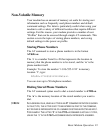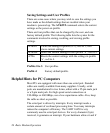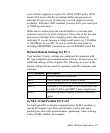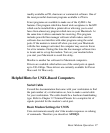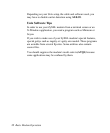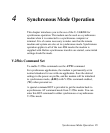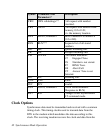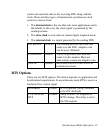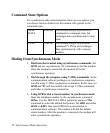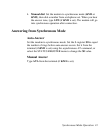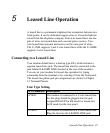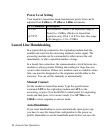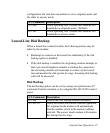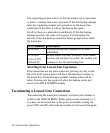
Synchronous Mode Operation 31
carrier and sends the data to the receiving DTE along with the
clock. There are three types of transmission synchronous clock
sources to choose from:
1. The internal clock is the one that suits most applications and is
the default; in this case, the clock signal is generated by the
sending modem.
2. The slave clock is used when in remote digital loopback mode.
3. The external clock is a signal generated by the sending DTE.
INTERNAL AT&X0 The modem provides the clock and
sends it to the DTE. Adaptive rate
can be used. (Default)
EXTERNAL AT&X1 The DTE provides the clock and
sends it to the modem. Must use
auto-retrain, cannot use adaptive rate.
SLAVE AT&X2 Recovered receiver clock serves as
transmission clock.
RTS Options
There are two RTS options. The choice depends on application and
host/terminal requirements. In asynchronous mode RTS is used as a
hardware flow control signal.
IGNORED AT&R1 RTS is ignored; always assumed
to be ON. (Default)
CTS TRACKS
RTS
AT&R0 Delay before CTS responds to
RTS's change. The delay is set in
the S26 register.



